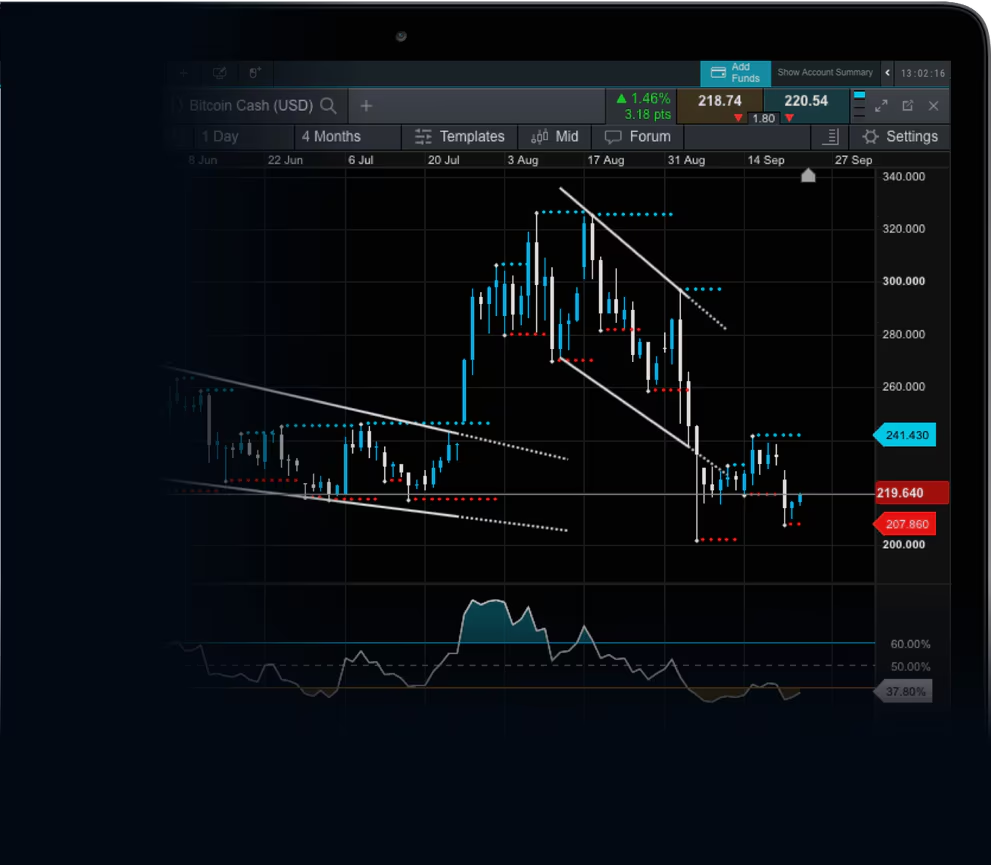Bitcoin, the world’s first decentralized digital currency, has become increasingly popular in recent years. With its soaring value and fluctuating prices, many people are curious about how much 10000 in bitcoin is worth. In this article, we will explore the current value of bitcoin and what you need to know about its value in relation to traditional currency.
As of the time of writing, the value of bitcoin is constantly changing. Bitcoin operates on a decentralized network, meaning it is not controlled by any government or financial institution. This decentralization has led to the extreme volatility in its price, with values often experiencing drastic shifts within a short period of time.
So, how much is 10000 in bitcoin worth? The answer to that question depends on the current market value of bitcoin. To find the current value, you can use various online platforms that track the price of bitcoin in real-time. Keep in mind that the conversion rate between traditional currency and bitcoin can vary between these platforms, so it’s essential to do some research and use a reliable source.
It’s important to note that investing in bitcoin carries significant risks. The value of bitcoin can be extremely volatile, and it’s not uncommon to see large price swings. Additionally, the cryptocurrency market is relatively new and largely unregulated, making it subject to potential fraud and market manipulation. Therefore, it’s crucial to have a clear understanding of the risks immediate edge involved before diving into bitcoin investments.
Here are a few key points to remember:
– The value of bitcoin is constantly changing
– 10000 in bitcoin is worth the current market value of the cryptocurrency
– Investing in bitcoin carries significant risks
Understanding the Value of Bitcoin
The value of Bitcoin is determined by several factors, including supply and demand, market sentiment, and the overall perception of the cryptocurrency.
Supply and Demand
The limited supply of Bitcoin plays a significant role in its value. Unlike traditional currencies that can be printed or manipulated by central banks, Bitcoin has a fixed supply of 21 million coins. This scarcity creates a sense of value and scarcity, as there will never be more than 21 million Bitcoins in existence.
Additionally, the demand for Bitcoin affects its value. When there is high demand for Bitcoin, the price tends to rise, and when there is low demand, the price tends to fall. Factors that influence demand include adoption by mainstream financial institutions, market speculation, and global economic conditions.
Market Sentiment
Market sentiment refers to the overall attitude and feeling of investors and traders towards Bitcoin. Positive sentiment, such as optimism and confidence in the cryptocurrency, can drive up the price, while negative sentiment, such as fear or uncertainty, can cause the price to decline.
Factors that can influence market sentiment include regulatory developments, news stories, and the perception of Bitcoin as a store of value or medium of exchange.
Perception and Trust
The perception and trust in Bitcoin also impact its value. The more widely accepted and trusted Bitcoin becomes, the higher its value tends to be. As more businesses and individuals start to accept Bitcoin as a form of payment, it gains legitimacy and value.
However, negative events or perceptions can negatively impact the value of Bitcoin. For example, security breaches or hacking incidents can lead to a loss of trust and a drop in value.
Volatility
Bitcoin is known for its volatility, with its price often experiencing significant fluctuations in a short period. This volatility can be attributed to a combination of the factors mentioned above, as well as the relatively small size of the Bitcoin market compared to traditional financial markets.
Investors and traders should be aware of this volatility and understand that the value of Bitcoin can change rapidly. It is important to consider your risk tolerance and investment goals when deciding to invest in Bitcoin.
Conclusion
The value of Bitcoin is influenced by a variety of factors, including supply and demand, market sentiment, and the perception and trust in the cryptocurrency. Understanding these factors can help investors and traders make informed decisions about investing in Bitcoin.
The Factors Influencing Bitcoin Price
The price of Bitcoin is influenced by several key factors, which can lead to significant fluctuations in its value. Understanding these factors is crucial for anyone interested in investing in or trading Bitcoin.
1. Supply and Demand
Like any other asset, the price of Bitcoin is determined by the forces of supply and demand. When the demand for Bitcoin is higher than its supply, the price tends to increase. Conversely, if the supply surpasses demand, the price may decline.
2. Market Sentiment
The sentiment of market participants can heavily influence the price of Bitcoin. Positive news and developments related to Bitcoin, such as institutional adoption or regulatory support, can boost market sentiment and lead to an increase in price. On the other hand, negative news or concerns, such as security breaches or regulatory crackdowns, can have a negative impact on market sentiment and cause the price to drop.
3. Investor Confidence
Investor confidence plays a crucial role in determining the price of Bitcoin. When investors have confidence in Bitcoin’s future prospects and its ability to serve as a store of value or hedge against traditional financial systems, they are more likely to buy and hold Bitcoin, driving up the price. Conversely, if investor confidence wanes, they may sell their Bitcoin holdings, leading to a decrease in price.
4. Technological Advancements
Technological advancements in the Bitcoin ecosystem can also influence its price. Improvements in scalability, security, and usability can make Bitcoin more attractive to investors and users, potentially driving up demand and pushing the price higher. Conversely, if there are concerns or setbacks in the development of the Bitcoin network, it may negatively impact the price.
5. Regulatory Environment
The regulatory environment surrounding Bitcoin can have a significant impact on its price. Favorable regulations that promote the adoption and use of Bitcoin can lead to increased demand and higher prices. Conversely, strict regulations or bans on Bitcoin can hinder its adoption and cause the price to decline.
6. External Economic Factors
External economic factors, such as inflation, interest rates, and geopolitical events, can also influence the price of Bitcoin. During periods of economic uncertainty or instability, Bitcoin can be seen as a safe haven asset by some investors, leading to increased demand and higher prices. Similarly, economic downturns or financial crises may lead to a decrease in demand for Bitcoin and a decrease in price.
It is important to note that the Bitcoin market is highly volatile, and the price can be influenced by a combination of these factors as well as other unforeseen events. Therefore, it is essential for individuals to conduct thorough research and stay informed about these factors when making decisions related to Bitcoin investment or trading.
The Current Exchange Rate of Bitcoin
Bitcoin is a decentralized digital currency, which means it operates without a central bank or government. Its value is based on supply and demand in the market. The exchange rate of Bitcoin fluctuates constantly, and it can vary from one exchange platform to another. Here is an overview of the current exchange rate of Bitcoin.
1. Bitcoin Price Index (BPI)
The Bitcoin Price Index (BPI) is one of the most commonly used indices for tracking the price of Bitcoin. It calculates the average price of Bitcoin across several major exchange platforms. This index is often used as a benchmark for the exchange rate of Bitcoin.
2. Exchange Platforms
Bitcoin can be bought and sold on various exchange platforms. Some of the popular platforms include Coinbase, Binance, Bitstamp, and Kraken. Each of these platforms has its own exchange rate, which is determined by market conditions and trading activity.
It is important to note that different exchange platforms may have slight variations in their exchange rates due to factors such as liquidity, trading volume, and fees. Some platforms may also offer additional features and services, which can impact their exchange rate.
3. Real-Time Charts and Websites
Several websites and platforms provide real-time Bitcoin exchange rates. These websites often display charts, graphs, and other data that can help users track the current price of Bitcoin. Some popular websites include CoinMarketCap, CoinGecko, and TradingView.
4. Factors Affecting the Exchange Rate
There are several factors that can influence the exchange rate of Bitcoin. These include:
- Market Demand: The demand for Bitcoin can impact its price. If there is high demand, the price may increase. Conversely, if there is low demand, the price may decrease.
- Regulatory Changes: Changes in regulations or government policies related to Bitcoin can affect its exchange rate. News about potential bans or restrictions can cause the price to fluctuate.
- Market Sentiment: Public perception and sentiment towards Bitcoin can also influence its exchange rate. Positive news and developments can increase investor confidence and drive up the price.
- Market Manipulation: The relatively small size of the Bitcoin market compared to traditional financial markets makes it susceptible to manipulation. Large trades or coordinated actions by individual investors or groups can impact the price.
5. Volatility
Bitcoin is known for its volatility. The exchange rate of Bitcoin can experience significant fluctuations within short periods. This volatility can be attributed to the speculative nature of the market, lack of regulation, and the relatively small size of the market.
Conclusion
The exchange rate of Bitcoin is constantly changing and can vary across different platforms. It is essential to stay informed about the current market conditions and factors influencing the price of Bitcoin. Real-time charts, websites, and indices can provide valuable insights into the exchange rate of Bitcoin.
Bitcoin’s Market Capitalization
- The market capitalization of Bitcoin refers to the total value of all Bitcoins in circulation. It is calculated by multiplying the current price of each Bitcoin by the total number of Bitcoins in existence.The market capitalization is an important metric that reflects the overall value and size of the Bitcoin network. It allows investors and analysts to assess the market’s perception of Bitcoin and its position among other cryptocurrencies.
- Bitcoin’s market capitalization has experienced significant growth since its inception in 2009. In the early days, when the price of Bitcoin was low and the number of coins in circulation was limited, the market capitalization was relatively small.However, as Bitcoin gained popularity and more people started using it, the price of Bitcoin started to rise. This led to an increase in the market capitalization, reflecting the growing demand and acceptance of Bitcoin.
- Bitcoin’s market capitalization is constantly changing due to fluctuations in its price and the number of coins in circulation. It is influenced by various factors such as investor sentiment, regulatory developments, technological advancements, and macroeconomic trends.As of [current date], the market capitalization of Bitcoin is [current market cap in USD]. However, it is important to note that the market capitalization can change rapidly, as the price of Bitcoin is highly volatile.
- Bitcoin’s market capitalization is a key indicator of its dominance in the cryptocurrency market. It is often used to compare Bitcoin’s value with other cryptocurrencies and traditional assets like stocks and bonds.Despite being the first and most well-known cryptocurrency, Bitcoin’s market capitalization is just a fraction of the total value of all cryptocurrencies combined. This highlights the potential for growth and the evolving nature of the cryptocurrency market.
Overall, Bitcoin’s market capitalization reflects the market’s perception of its value and potential. It is a dynamic metric that provides insights into the popularity and acceptance of Bitcoin as a store of value and medium of exchange.
The History of Bitcoin Price Fluctuations
Bitcoin, the first decentralized cryptocurrency, has experienced significant price fluctuations since its inception in 2009. The value of Bitcoin is determined by supply and demand in the market, which is influenced by various factors such as investor sentiment, regulatory actions, technological advancements, and macroeconomic events.
Here is a brief overview of the major price fluctuations in the history of Bitcoin:
1. Early Years (2009 – 2013)
- In January 2009, the first block of the Bitcoin blockchain, known as the “genesis block,” was mined, marking the birth of Bitcoin. The currency had no specific value at this point.
- Throughout 2009 and 2010, Bitcoin was primarily used by enthusiasts and developers, and its value remained extremely low.
- In 2011, Bitcoin gained traction in the mainstream media, resulting in an increased interest from investors. The price reached its first significant milestone of $1 per Bitcoin in February 2011.
- In April 2013, Bitcoin experienced a major price surge, reaching a high of $266, before crashing to around $50 in the following days. This event gained media attention and brought Bitcoin into the limelight.
2. The Mt. Gox Era (2014 – 2015)
- Mt. Gox, one of the largest Bitcoin exchanges at the time, was hacked in February 2014, resulting in the loss of approximately 850,000 Bitcoins. This event led to a significant drop in the Bitcoin price, reaching a low of $340.
- Throughout 2014 and 2015, Bitcoin’s price remained relatively stable, fluctuating between $200 and $500.
3. The Bull Run and Price Correction (2017 – 2018)
- In 2017, Bitcoin experienced an unprecedented bull run, reaching an all-time high of nearly $20,000 in December. This massive price increase was driven by the growing interest from retail investors and speculators.
- However, the price quickly corrected in the following months, dropping to around $3,000 by December 2018. This period was characterized by increased regulatory scrutiny and the bursting of the initial coin offering (ICO) bubble.
4. Recent Years (2019 – present)
- In 2019, Bitcoin’s price started to recover, gradually increasing throughout the year.
- In 2020, the COVID-19 pandemic and the resulting economic uncertainty led to a significant drop in global markets, including Bitcoin. However, Bitcoin quickly rebounded and ended the year on a positive note.
- In 2021, Bitcoin experienced another major bull run, driven by institutional adoption and mainstream recognition. The price reached new all-time highs of over $64,000 in April 2021.
It is important to note that Bitcoin’s price is known for its volatility, and investors should exercise caution when considering investing in cryptocurrencies. It is always recommended to do thorough research and seek professional advice before making any investment decisions.
Bitcoin as an Investment
Bitcoin has gained significant attention as an investment asset in recent years. Here are some key points to consider if you are thinking about investing in Bitcoin:
1. High Potential Returns
Bitcoin has historically shown high potential returns. Over the years, the price of Bitcoin has soared, making early investors millionaires. However, it’s important to note that past performance does not guarantee future results, and the market for Bitcoin can be highly volatile.
2. Limited Supply
Bitcoin has a limited supply, which is one of the factors that contributes to its value. There will only ever be 21 million Bitcoins in existence, making it a scarce asset. As a result, some investors view Bitcoin as a hedge against inflation and a store of value.
3. Diversification
Investing in Bitcoin can be a way to diversify your investment portfolio. Traditional investment assets like stocks and bonds may move in sync with each other, but Bitcoin has shown little correlation with these assets. Adding Bitcoin to your portfolio can potentially help reduce overall risk.
4. Accessibility
Investing in Bitcoin has become increasingly accessible. There are various platforms and exchanges where you can buy, sell, and hold Bitcoin. However, it’s important to do thorough research and choose a reputable platform that prioritizes security measures.
5. Regulatory Risks
Bitcoin operates in a relatively unregulated space. While this has allowed for innovation and growth, it also poses potential risks. Regulatory actions or changes in legislation can have a significant impact on the value and legality of Bitcoin. Investors should stay informed and be prepared for regulatory risks.
6. Volatility
Bitcoin is known for its price volatility. The market can experience significant price swings within short periods of time. While volatility can present opportunities for profit, it can also lead to significant losses. It’s important to assess your risk tolerance and only invest what you can afford to lose.
7. Long-Term Outlook
When considering Bitcoin as an investment, it’s important to have a long-term outlook. The technology behind Bitcoin, blockchain, has the potential to revolutionize various industries. Some believe that Bitcoin could become a widely accepted global currency in the future. However, this is still highly speculative, and it’s crucial to approach Bitcoin investment with caution.
- High potential returns
- Limited supply
- Diversification
- Accessibility
- Regulatory risks
- Volatility
- Long-term outlook
What Can You Buy with 10000 Bitcoin?
If you’re lucky enough to own 10000 Bitcoins, you have a digital fortune at your disposal. With the increasing popularity and acceptance of Bitcoin as a form of payment, there are now numerous options available for spending your cryptocurrency. Here are some of the things you can buy with 10000 Bitcoin:
1. Real Estate
With 10000 Bitcoin, you could purchase a luxurious property in many parts of the world. From stunning beachfront villas to penthouse apartments in the heart of major cities, Bitcoin can offer you access to some of the most exclusive real estate opportunities.
2. Luxury Cars
If you have a taste for luxury vehicles, 10000 Bitcoin can get you a collection of high-end cars. From sleek sports cars to elegant sedans, there are dealerships that accept Bitcoin as payment for their vehicles. Imagine cruising down the road in your brand-new Bitcoin-purchased car.
3. Travel and Experiences
Bitcoin opens up a world of possibilities when it comes to travel. Use your 10000 Bitcoin to book luxurious vacations, private yacht charters, or adventurous excursions. Many online platforms now accept Bitcoin for travel bookings, allowing you to explore the world in style.
4. Investment Opportunities
While it may not be as exciting as buying a luxury car or a lavish property, you can also use your 10000 Bitcoin to invest in various opportunities. From stocks and bonds to startups and cryptocurrencies, your Bitcoin can help you diversify your investment portfolio and potentially grow your wealth even further.
5. High-End Electronics
Whether you’re a tech enthusiast or simply enjoy the latest gadgets, Bitcoin can be used to purchase high-end electronics. From smartphones and laptops to gaming consoles and smart home devices, many online retailers now accept Bitcoin as a form of payment.
6. Art and Collectibles
Bitcoin has also made its way into the world of art and collectibles. With 10000 Bitcoin, you could become the proud owner of rare artwork, vintage wine, or even unique collectible items. Online marketplaces and auction houses now accept Bitcoin for these valuable assets.
7. Education and Learning
If you’re looking to invest in your own knowledge and skills, Bitcoin can help you with that too. Many online education platforms accept Bitcoin as payment for courses, allowing you to learn new skills or pursue further education in a digital and decentralized way.
8. Philanthropy
If you want to make a positive impact with your Bitcoin fortune, consider donating to charitable organizations that accept cryptocurrency. Bitcoin donations can support causes like poverty alleviation, healthcare, education, and environmental conservation.
9. Start Your Own Business
With 10000 Bitcoin, you have the capital to start your own business venture. Whether it’s an online startup, a retail store, or a service-based company, Bitcoin can provide you with the financial resources necessary to turn your entrepreneurial dreams into reality.
10. Financial Freedom
Ultimately, having 10000 Bitcoin gives you the freedom and flexibility to choose how you want to spend or invest your wealth. Whether you want to indulge in luxury or secure your financial future, Bitcoin offers possibilities that traditional currencies cannot match.
As the acceptance of Bitcoin continues to grow, so does the list of things you can buy with it. From extravagant purchases to thoughtful investments, the power of Bitcoin allows you to make the most of your digital fortune.
The Risks of Investing in Bitcoin
1. High Volatility
One of the biggest risks associated with investing in Bitcoin is its high volatility. The price of Bitcoin can fluctuate significantly in a short period of time, which can lead to substantial gains or losses for investors. This volatility is driven by various factors, including market demand, news events, and regulatory changes. It is important for investors to be prepared for the possibility of large price swings and to carefully consider their risk tolerance before investing in Bitcoin.
2. Regulatory Uncertainty
Another risk to consider when investing in Bitcoin is the regulatory uncertainty surrounding its use and trading. Governments around the world have different approaches to cryptocurrency regulation, and the regulatory landscape is constantly evolving. Changes in regulations can have a significant impact on the value and usability of Bitcoin, as well as the ability to buy, sell, and trade it. Investors should stay informed about the regulatory environment and be prepared for potential changes that could affect their investments.
3. Security Concerns
Bitcoin and other cryptocurrencies are stored in digital wallets, which are susceptible to hacking and theft. While Bitcoin itself has proven to be secure, the same cannot always be said for the exchanges and wallets used to store and transact in Bitcoin. There have been numerous high-profile cases of cryptocurrency exchanges being hacked, resulting in the loss of millions of dollars worth of Bitcoin. It is crucial for investors to take precautions to protect their Bitcoin, including using secure wallets, enabling two-factor authentication, and keeping their private keys offline.
4. Lack of Regulation and Investor Protection
Unlike traditional financial markets, the cryptocurrency market is largely unregulated. This lack of regulation can expose investors to fraudulent schemes, market manipulation, and other types of misconduct. Additionally, the lack of investor protection measures, such as deposit insurance or recourse mechanisms, means that investors have limited avenues to seek redress in the event of losses or disputes. It is important for investors to conduct thorough research, choose reputable exchanges and platforms, and be cautious of potential scams or fraudulent schemes.
5. Market Adoption and Technological Risks
Bitcoin’s value and usability depend on widespread market adoption and technological advancements. If Bitcoin fails to gain mainstream acceptance or faces technological setbacks, its value could decline significantly. Additionally, advances in blockchain technology or the emergence of competing cryptocurrencies could also impact the value and viability of Bitcoin. Investors should stay informed about the latest developments in the cryptocurrency space and assess the potential risks and opportunities for Bitcoin and other digital assets.
Conclusion
While Bitcoin can offer substantial investment opportunities, it is important to be aware of the risks involved. High volatility, regulatory uncertainty, security concerns, lack of regulation, and market adoption and technological risks are some of the key risks to consider. Investors should carefully assess their risk tolerance and research the market before making any investment decisions. It is advisable to consult with a financial professional before investing in Bitcoin or any other cryptocurrency.
How to Buy and Sell Bitcoin
Buying and selling Bitcoin can be done through various methods and platforms. Here is a step-by-step guide on how to buy and sell Bitcoin:
1. Choose a digital wallet
A digital wallet is required to store and manage your Bitcoin. You can choose from different types of wallets, such as hardware wallets, online wallets, or mobile wallets. Research and choose a wallet that suits your needs and offers the desired level of security.
2. Sign up for an exchange platform
An exchange platform is where you can buy and sell Bitcoin. Some popular exchanges include Coinbase, Binance, and Kraken. Sign up for an account on a trusted exchange platform and complete the verification process, which may require providing identification documents.
3. Fund your account
After setting up your account, you need to fund it with fiat currency, such as USD or EUR. This can be done through various payment methods, including bank transfers, credit/debit cards, or even other cryptocurrencies.
4. Place a buy order
Once your account is funded, you can place a buy order for Bitcoin. Specify the amount of Bitcoin you want to buy and the price you are willing to pay. If the market conditions match your order, it will be executed, and the Bitcoin will be transferred to your wallet.
5. Monitor the market
Bitcoin prices can be highly volatile. It is important to monitor the market and stay updated with the latest news and trends. This will help you make informed decisions when buying or selling Bitcoin.
6. Decide when to sell
Once you have bought Bitcoin, you can decide when to sell it. This could be based on your investment goals, market conditions, or other factors. You can place a sell order on the exchange platform and specify the amount of Bitcoin you want to sell and the desired price.
7. Withdraw funds
When you successfully sell your Bitcoin, the funds will be available in your exchange account. You can then withdraw these funds to your bank account or transfer them to another wallet or exchange platform.
8. Be aware of taxes and regulations
It is important to be aware of the tax implications and regulations related to buying and selling Bitcoin in your country. Consult with a tax advisor or a legal professional to ensure compliance with the laws.
Note: Buying and selling Bitcoin involves risks, and the cryptocurrency market can be highly unpredictable. It is advisable to do thorough research, start with small investments, and only invest what you can afford to lose.
Bitcoin’s Impact on the Financial Industry
Bitcoin, the world’s first decentralized digital currency, has had a significant impact on the financial industry since its inception in 2009. With its unique features and the underlying technology of blockchain, Bitcoin has revolutionized several aspects of the financial sector.
- Peer-to-Peer Transactions: Bitcoin allows for direct peer-to-peer transactions without the need for intermediaries such as banks or financial institutions. This decentralized approach provides users with more control over their funds and reduces transaction costs.
- Global Accessibility: Bitcoin transactions can be conducted online, and the digital currency can be accessed by anyone with an internet connection. This global accessibility has opened up financial opportunities for individuals in underserved regions and helped promote financial inclusion.
- Transparency and Security: The blockchain technology underlying Bitcoin ensures transparency and security in transactions. Each transaction is recorded in a public ledger, making it tamper-proof and verifiable. This level of transparency reduces fraud and increases trust in financial transactions.
| Aspect | Bitcoin | Traditional Financial Systems |
|---|---|---|
| Transaction Speed | Fast | Slower due to intermediaries |
| Transaction Costs | Low | Higher due to fees and charges |
| Accessibility | Global | Dependent on banking infrastructure |
| Transparency | High | Varies |
| Security | High | Varies |
Additionally, the rise of Bitcoin has prompted traditional financial institutions to take notice and explore the potential of blockchain technology. Many banks and financial companies have started to integrate blockchain into their operations to streamline processes, improve security, and reduce costs. This has led to the emergence of new financial products and services that leverage the benefits of blockchain technology.
- Cryptocurrency Exchanges: The growth of Bitcoin has resulted in the establishment of numerous cryptocurrency exchanges, where individuals can buy, sell, and trade digital currencies. These exchanges provide liquidity and facilitate the conversion of Bitcoin into other cryptocurrencies or traditional fiat currencies.
- Blockchain-based Financial Instruments: Financial institutions are exploring the use of blockchain technology to create new types of financial instruments such as digital tokens, smart contracts, and decentralized lending platforms. These instruments offer increased efficiency, transparency, and programmability compared to traditional financial instruments.
- Remittances and Cross-Border Payments: Bitcoin and other cryptocurrencies have the potential to streamline and reduce the costs of remittance and cross-border payment processes. Blockchain technology enables faster, cheaper, and more secure transfers of funds across borders, bypassing the need for traditional intermediaries.
In conclusion, Bitcoin’s impact on the financial industry has been significant and far-reaching. It has disrupted traditional financial systems by offering a decentralized, transparent, and secure alternative. Furthermore, Bitcoin’s emergence has prompted traditional financial institutions to explore the potential of blockchain technology, leading to the development of innovative financial products and services.








This article provides a comprehensive overview of the value of 10,000 bitcoins and its significance in the world of cryptocurrency. As a reader, I found it to be informative and well-researched. The article begins by explaining the current value of 10,000 bitcoins and its potential fluctuations in the market. It highlights the fact that bitcoin’s price is highly volatile and subject to unpredictable changes. This information is crucial for readers who are interested in investing in bitcoin or those who already own a significant amount of it. Furthermore, the article dives into the historical aspect of bitcoin’s value, focusing on its initial worth and the subsequent rise in its price over the years. It also touches upon the various factors that can influence the value of bitcoin, such as market demand, regulations, and technological advancements. I appreciate how the article also sheds light on the potential risks associated with investing in bitcoin. It warns readers about the volatility of the market and advises them to make informed decisions based on their own risk tolerance and financial situation. This unbiased approach is crucial in helping readers navigate the complex cryptocurrency landscape. Overall, this article provides readers with valuable insights into the significance of 10,000 bitcoins and the factors that determine its value. Whether you are a seasoned bitcoin investor or someone new to the cryptocurrency world, this article is definitely worth a read. It covers all the essential aspects and equips readers with the knowledge they need to make informed decisions regarding their bitcoin investments.
As a female reader, I find the article “How much is 10000 in bitcoin: What you need to know” informative and helpful. The article provides a comprehensive explanation about the current value of bitcoin and how it affects the conversion rate for different amounts, including 10000 bitcoin. I appreciate how the article breaks down the concept of bitcoin and its volatility, making it easier for me to understand. The author also mentions the factors that can influence the price of bitcoin, such as market demand, government regulations, and technological advancements. The article goes on to discuss the significance of 10000 bitcoin, providing perspective on its value in relation to other currencies and assets. This gives me a better understanding of the potential worth of such a large amount in bitcoin. Additionally, the article acknowledges the risks and potential rewards associated with investing in bitcoin and encourages readers to conduct thorough research before making any decisions. This responsible approach to investing is refreshing and adds credibility to the information provided. Overall, I found this article to be a valuable resource for anyone looking to understand how much 10000 bitcoin is worth. It provides clear explanations and useful insights, making it a must-read for individuals interested in cryptocurrencies.
As a female reader, I found this article on “How much is 10000 in bitcoin: What you need to know” to be quite informative and insightful. It provided a clear explanation of how the value of bitcoin fluctuates and the factors that influence its price. I appreciated the author’s emphasis on the significance of supply and demand, as well as market sentiment, in determining the value of bitcoin. Furthermore, the article explained the concept of cryptocurrency exchanges and the role they play in buying and selling bitcoin. This was particularly helpful for someone like me who is new to the world of bitcoin and cryptocurrencies. The author’s inclusion of tips for beginners, such as the importance of researching and choosing a reputable exchange, added value to the article. I also found the section on the volatility of bitcoin to be interesting. It highlighted the risks associated with investing in bitcoin and cautioned against making impulsive decisions based on short-term price fluctuations. The article’s recommendation to approach bitcoin as a long-term investment resonated with me, as it aligns with my own investment strategy. Overall, this article provided a comprehensive overview of the topic and answered the questions I had about the value of 10000 in bitcoin. It was written in a clear and accessible manner, making it easy for readers like me to understand. I would definitely recommend this article to anyone interested in learning more about bitcoin and its current value.
I find the article “How much is 10000 in bitcoin: What you need to know” quite informative and interesting. As a female reader, I’ve always been curious about cryptocurrency and its value. Bitcoin, in particular, has gained a lot of attention in recent years, and the idea of owning 10000 BTC seems exciting and potentially profitable. The article provides a clear explanation of how the value of bitcoin is determined and how it can fluctuate. It highlights the importance of keeping up with the latest trends and news in the cryptocurrency market to make informed decisions. I appreciate how the article gives real-life examples of how owning 10000 BTC can make a significant difference in someone’s life. It’s fascinating to think about the possibilities and potential financial freedom that could come from investing in bitcoin. However, it is crucial to remember that cryptocurrency investing comes with risks. The article does well to mention the volatility and regulatory challenges associated with bitcoin. It encourages readers to do thorough research and consult with professionals before making any investment decisions. Overall, this article has broadened my understanding of bitcoin and its potential value. It has encouraged me to stay informed about the cryptocurrency market and consider the possibilities of investing in bitcoin. I look forward to reading more articles like this in the future.
As a female reader, I found this article on “How much is 10000 in Bitcoin: What you need to know” to be quite informative. The author explains the basics of Bitcoin and its current value in an easy-to-understand manner. I appreciate that the article gives a clear explanation of how the value of Bitcoin is determined and the factors that can affect its price. The article also provides insights into the historical price fluctuations of Bitcoin, which I found fascinating. It’s interesting to see how this digital currency has evolved over the years and the potential it holds for the future. Furthermore, the article addresses the question of whether investing in Bitcoin is a good idea. It presents both the advantages and risks associated with investing in this cryptocurrency, which I found to be fair and balanced. It’s always important to consider both sides before making any investment decisions, especially with something as volatile as Bitcoin. Overall, this article has provided me with a solid understanding of the current value of Bitcoin and the factors that influence its price. I feel more informed and confident in my knowledge of this cryptocurrency. I would recommend this article to anyone looking to learn more about Bitcoin and its potential as a digital asset.
I found this article on “How much is 10000 in bitcoin: What you need to know” quite informative and helpful. As a female reader, I have always been curious about the world of cryptocurrencies and how they can fit into my financial plans. The article provided a clear explanation of the current value of bitcoin and how it can fluctuate over time. It gave me a better understanding of why it is important to stay updated with the latest market trends and news when dealing with bitcoin. I also appreciated the mention of the various factors that can influence the price of bitcoin, such as supply and demand, government regulations, and investor sentiment. It reminded me that investing in bitcoin can be risky and unpredictable, but it can also offer great potential for growth. Furthermore, the article discussed the potential advantages and disadvantages of investing in bitcoin. It highlighted the potential for high returns but also cautioned about the lack of regulation and potential security risks associated with cryptocurrencies. Overall, I found this article to be a comprehensive guide for someone like me who is interested in understanding the value of bitcoin. It provided valuable insights and answered some of the questions I had. I believe it would be a useful resource for anyone looking to learn more about the current value of bitcoin and its potential as an investment.
Wow, I had no idea that 10,000 bitcoin could be worth so much! I remember back in the day when bitcoin was just starting out and people were skeptical about its value. Now, it’s amazing to see how much it has grown over the years. It really makes you think about the potential of cryptocurrency and how it could change our financial system. I have always been interested in investing, but I have been hesitant to get into bitcoin. The volatile nature of the market has scared me off in the past. However, after reading this article, I can’t help but feel a sense of regret for not getting on board sooner. The fact that 10,000 bitcoin could be worth millions is mind-boggling. It makes me wonder if I should take the plunge and invest in bitcoin now, or if it’s too late. I guess it’s never too late to invest in something that has the potential to grow exponentially. I appreciate the article breaking down how bitcoin’s value has changed over the years. It’s interesting to see the different factors that have influenced its price. It definitely gives me a better understanding of the cryptocurrency market. Overall, this article has opened my eyes to the potential of bitcoin. It has made me seriously consider investing in it, despite my initial reservations. Who knows, maybe in a few years, I’ll be kicking myself for not investing when bitcoin was worth 10,000. Only time will tell.